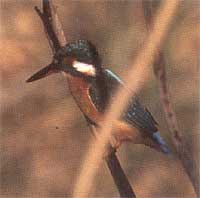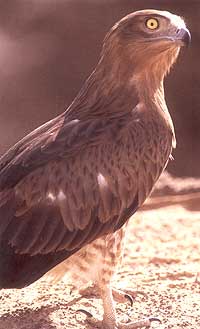Jordan to enjoy the sight of some rare species of indigenous birds and others that migrate annually between the northern and southern hemispheres. Jordan's location at the crossroads of Europe, Africa and Asia means that birds from these three regions can sometimes be spotted in the same general area in Jordan.
Jordan's remarkable variety of habitats - from rugged mountains and evergreen woodlands to scrubby steppe and hot deserts also makes for a dazzling variety of bird species. Jordan's Great Rift Valley is something of a high-traffic crossroads on the main migration routes for birds moving between Eastern Europe, Central Asia, Russia, and Africa. At certain times of the year, the skies over the Rift Valley are full of circling birds of prey.
Bird watching in Jordan is also enhanced by the genuine friendliness of the Jordanian people, and the opportunity to combine bird-watching with trips to some of the Middle East's most awesome ancient and natural wonders, such as Petra, Wadi Rum, or the Dead Sea.
What sort of birds can you see?
The Eastern Desert habitat is interrupted by the Azraq Wetland Reserve, and is home to aquatic and desert species along with migrants in the spring, such as the Temmiink's Horned Lark, Desert Lark, Hoopoe Lark, Desert Wheatear and Trumpeter Finch. In winter, Cranes and Imperial Eagles roan across this area, while in the Desert Castles area east of Amman you can see Tick-billed Lark and Red-rumped Wheatears.
In the western highland Mediterranean habitats, surrounded by open steppe country, the wooded area of Ajloun, Zubia, Dibbin, and Dana are home to the Palestine Sunbird, Upchers, Orphean, and Sardinian Warbler. The more open steppe habitats typically contain the Spectacled Warbler, Long-billed Pipit, Black-eared Wheatear, Woodchat Shrike and Linnet.
The
rift margins and valleys of the western highlands represent the crossroads
of four biogeographic zones. Wadi Shu'eib and Wadi Mujib with their
perrenial watercourses are home to beautiful Smirna Kingfisher, while at
the magnificient rocky gorges of Wadi Rum, Dana, Mujib and Petra you can
find the Griffon Vulture, Bonelli's Eagle, Hume's Towny Owl, Blackstart,
different Wheatears, Scrub Warbler, Sinai Rose Finch, House Bunting,
Tristram;s Grackle and Fan-tailed Raven.
The Dead Sea area and Wadi Arabah are home to Arabian and African species
such ass the Sand Partridge, Bar-tailed Dunns and Hoopoe Larks, Littke
Green Bee-eater, Blackstart , and Arabian Warbler.
Important Bird Area [IBAs] in Jordan
A
total of 17 sites have been declared as IBAs in Jordan, covering 9.5% of
Jordan's area. Two of Jordan's national parks, and the six nature reserves
are IBAs.
Five of the IBA sites are fully protected by law, five are partially
protected, and two further are officially proposed for legal protection.







(JERASH - DECAPOLIS ERA - JORDAN - PETRA - WADI RUM - AQABA - THE DEAD SEA - MUJIB WILDLIFE RESERVE - DANA NATURE RESERVE - SHAUMARI NATURE RESERVE - AJLOUN NATURE RESERVE - AZRAQ WETLAND RESERVE - BIRD WATCHING - THE GULF OF AQABA - BETHANY BEYOND JORDAN)
EGYPT - LEBANON - SYRIA